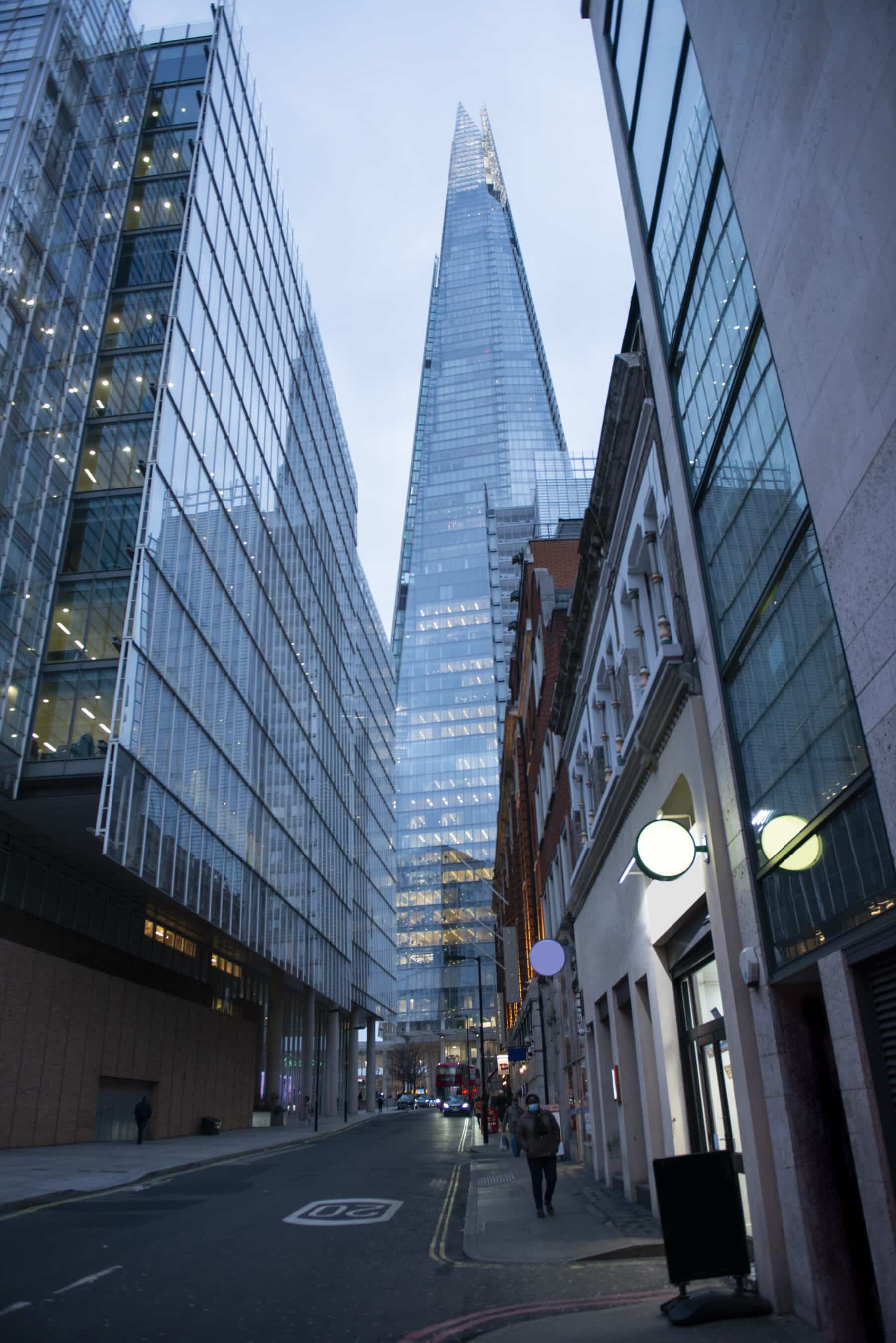- Analysis by Search Acumen says tax reforms will disproportionately effect London where prices are highest, with over 6,100 properties liable to the surcharge at a collective rateable value of over £9bn.
- Currently, 16,780 properties sit above the rateable value of £500,000 and will be subject to tax increases under new reforms. The number of properties in England subject to current Business Rates sits at 2 million, with a total rateable value of £71 billion.
- 70% of all of England’s offices spaces in the top multiplier are in London, higher than any other region.
- Overall, offices (27%) and industrial warehouses (21%) will be most impacted by the tax hike.
- Search Acumen: “Tax increases to businesses at a time of low-growth and high, persist inflation is questionable.”
New analysis by leading property data provider, Search Acumen, shows that 16,780 properties across England above the rateable value of £500,000 will be affected by an increase to business rates if Chancellor Rachel Reeves goes through with planned reforms [Table 1], having a material impact on occupiers and investors.
The analysis indicates that business rates increasing will disproportionally impact London, with almost two-fifths (37%) of properties liable based in the Capital alone. The 6,100 premises have a rateable value of £9bn[1]: nearly half of the overall collective value of rateable properties above the £500,000 threshold [Table 1].
Furthermore, 70% of all of England’s office spaces that sit in the top bands of business rates are in London (3,220 out of 4,590), higher than any other region [Table 2]. Search Acumen points to the risk of cash flow pressure, reduced investment and higher vacancy rates during a time of persistent inflation and low-growth economy.
Overall, the number of properties in England that are subject to current business rates sits at 2 million[2], with a total ratable value of £71 billion[3]. The proportion of properties liable for higher tax equates to a third of the overall rateable value at £22.6 bn[4] (31.9%) despite representing less than 1% of all properties (16,780).
Table 1. Regional breakdown of where the surcharge will hit hardest.
| Region | Number of Rateable Properties above £500,000 | Rateable Value (in thousands) |
| England | 16,780 | 22,687,829 |
| London | 6,100 | 9,237,132 |
| South East | 2,520 | 3,102,952 |
| East of England | 1,600 | 2,111,847 |
| North West | 1,550 | 1,999,395 |
| West Midlands | 1,320 | 1,567,163 |
| South West | 1,090 | 1,262,000 |
| East Midlands | 1,080 | 1,481,775 |
| Yorkshire & the Humber | 1,060 | 1,347,967 |
| North East | 460 | 577,599 |
Source: Search Acumen analysis.
Table 2: London offices subject to the largest increase in Business Rates.
| Number of rateable properties per region | Office’s above £500,000 |
| London | 3,220 |
| South East | 460 |
| East of England | 220 |
| North West | 210 |
| West Midlands | 140 |
| South West | 140 |
| Yorkshire and the Humber | 90 |
| North East | 50 |
| East Midlands | 50 |
Source: Search Acumen analysis.
The findings come from Search Acumen’s analysis of the latest Valuation Office Agency (VOA) government dataset, which deals with property valuation for taxation, business rates, and similar purposes. The rateable value is based on the annual rent that the property could have been let for on the open market at a particular date.
Business Rates raised £27bn in revenue in the last tax year (2023/24), with UK property tax currently over double the OECD average. Whilst the Chancellor announced that lower multipliers will be introduced in England for Retail, Hospitality and Leisure (RHL) properties whose 2026 rateable value is below £500,000, to fund the initiative, a new higher multiplier for those above £500,000 will also be introduced. Details of the lower and higher multipliers will be confirmed in the 2025 Budget, once the Government has analysed the new 2026 rateable values, due to take effect in April 2026.
Overall, analysis indicates that commercial property is the largest sector liable to current Business Rates, accounting for 75% of all property types [Table 3], followed by offices and shops. The type of property that derives the highest average rateable value are hypermarkets from a pool of just 30 premises.
Looking at sectors that will be hardest hit if a business rates surcharge is introduced at the top band, offices (27%) come in top [Table 4]. Significantly, industrial, warehouses and distribution centres will be the second largest sector hit (21%), leaving many more exposed to economic headwinds. Shops, despite a close third, would be subject to discounted RHL multipliers that will protect many retailers from the hike.
“The prospect of higher business rates, when taxes are already at record levels, risks choking investment, jobs and growth – especially in professional service sectors that are most vulnerable to higher office rents. Hiking costs in a low-growth, high-inflation environment is a risky move. “Large operators such as supermarkets and logistics firms are bracing for higher bills that could push marginal sites into the red. Calls to spare supermarkets from the top tax band reflect fears that steeper rates would feed through to food prices and consumers’ pockets. “London’s productivity has slipped below pre-pandemic levels, and for firms already squeezed by payroll costs, we may see an increase in mergers, acquisitions and business closures. If cashflow margins collapse under rising tax pressure, property sell-offs, higher vacancy rates, reduced investment and property devaluations in some parts of the market are all possible.”
Table 3. Sector breakdown of property liable to existing Business Rates.
| Property type | England & Wales All rateable properties |
England & Wales All rateable value (in thousands) |
| All Properties | 2,129,730 | 70,943,844 |
| Commercial | 1,604,930 | 49,911,445 |
| Offices | 431,160 | 16,352,273 |
| Shops | 500,910 | 12,778,084 |
| Warehouses & stores | 273,970 | 11,899,253 |
| Other Shops | 490,520 | 10,147,362 |
| Industrial | 270,480 | 8,216,410 |
| Factories, mills & workshops | 259,160 | 6,776,364 |
| Educational, training & cultural | 48,140 | 4,920,675 |
| Miscellaneous | 84,120 | 4,359,688 |
| Local authority schools & colleges | 24,100 | 2,808,017 |
| Superstore and premises | 2,180 | 2,356,770 |
| Leisure | 96,730 | 2,214,942 |
Source: Search Acumen analysis.
Table 4. Sector breakdown of property liable to the new Business Rates surcharge in the top band.
| Sector | Properties with a rateable value of over £500,000 | Percentage of market |
| Offices | 4,590 | 27% |
| General Industrial + Industrial Storage & Distribution | 3,580 | 21% |
| Retail: Shops | 3,240 | 19% |
| Education | 1,560 | 9% |
| Assembly and Leisure | 670 | 4% |
| Industry – Other | 620 | 4% |
| Hotels, Guest & Boarding, Self Catering etc | 550 | 3% |
| Other – Other Sub-sector | 460 | 3% |
| Health | 350 | 2% |
| Utilities | 330 | 2% |
| Other – Retail Sub-sector | 310 | 2% |
| Other – Offices Sub-sector | 230 | 1% |
| Other – Storage & Distribution Sub-sector | 110 | 1% |
| Residential Institutions | 90 | 1% |
| Transport | 60 | 0% |
| Retail: Financial & Professional Services | 20 | 0% |
| Non Residential Institutions | 20 | 0% |
Source: Search Acumen analysis.
[1] £9,237,132,000
[2] 1,996,820 for England only
[3] £70,943,844,000
[4] £22,687,829,000

 Andrew Lloyd
Andrew Lloyd










